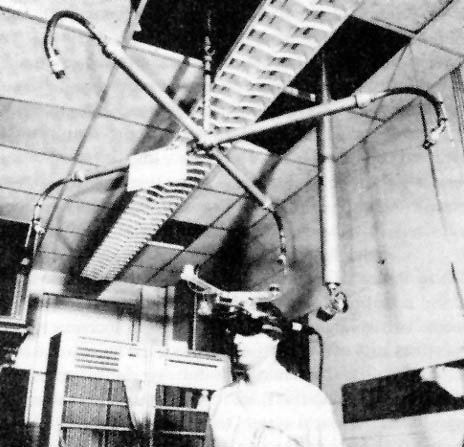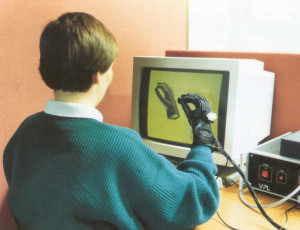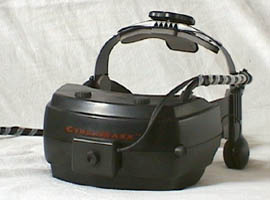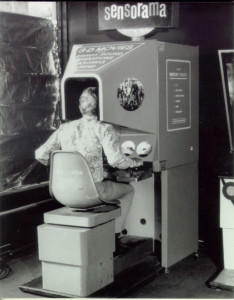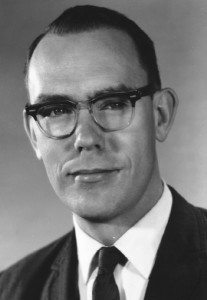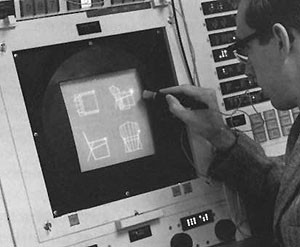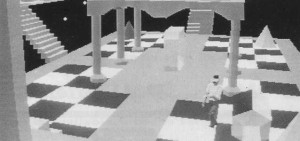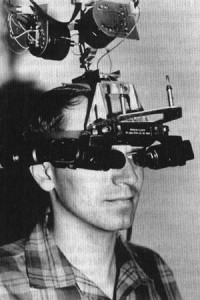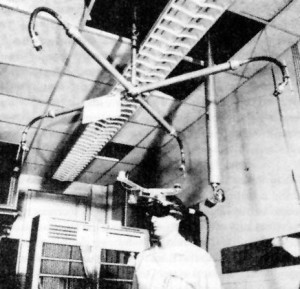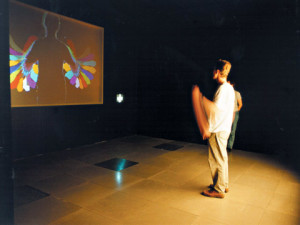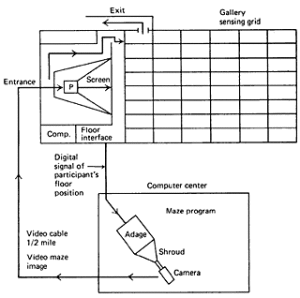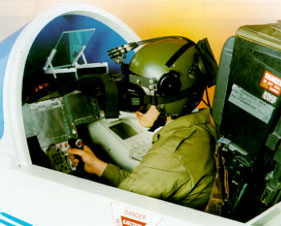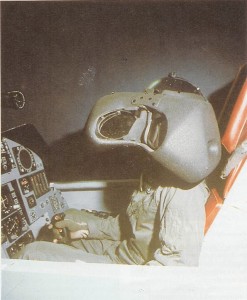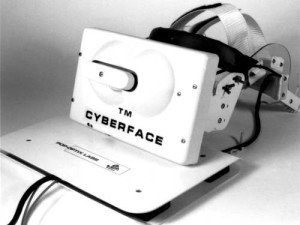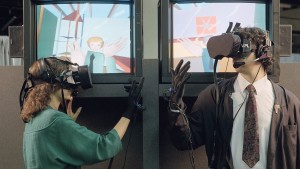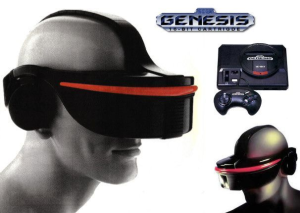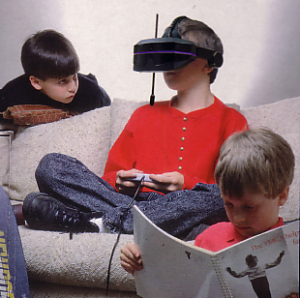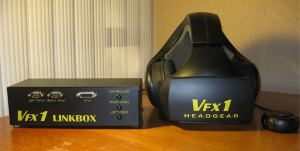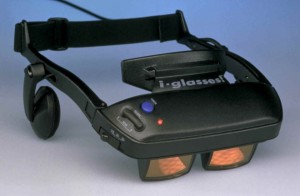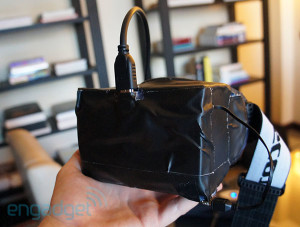Virtual Reality: The Definition
Virtual reality is an artificial environment that is created with software and presented to the user in such a way that the user suspends belief and accepts it as a real environment. On a computer, virtual reality is primarily experienced through two of the five senses: sight and sound. However, there are and have been devices that have used smell, and touch to expose users to a virtual experience.
The most simple form of virtual reality is a 3-D image that can be explored interactively at a personal computer, usually by manipulating keys or the mouse so that the content of the image moves in some direction or zooms in or out. More sophisticated efforts involve such approaches as wrap-around display screens, actual rooms augmented with wearable computers, and haptics devices that let you feel the display images.
Where Virtual Reality Began
The promise of a virtual world where you can go anywhere, and see anything from the comforts of your own home, only using goggles, has always been enormous. It’s the same escape tactics peddled by sex, art, drugs, and alcohol – use me to escape the mundane through a metaphysical transportation to an altered state.
Virtual reality may be born of technology, but at its core is an organic experience. The experience as a whole happens strictly within the mind. A true definition of virtual reality has always been hard to articulate and formulate. The concept of something different other than our own physical existence has been explored for thousands of years, but the closest modern ancestor came to be into existence in the fifties.
We have come a long way in the last 60 years in pursuit of a true virtual experience. Our story begins with Morton Heilig, who in 1957 invented the Sesorama. The Sensorama used smells, wind, sound and 3d images, in order to create the illusion of a virtual reality. While Heilig’s device wasn’t very well known he is still considered the first documented inventor of a virtual reality system.
Ivan Sutherland and The Sword of Damocles
In 1963 Ivan Sutherland invented “Sketchpad”, which is considered to be the ancestor of modern computer-aided design programs as well as a major breakthrough in the development of computer graphics in general. With “Sketchpad” artists and animators could use a stylus and tablet like device to transmit their work into a rough digital workspace.Ivan Sutherland, in 1965, conceived of what he termed “The Ultimate Display,” or, as he wrote, “a room within which the computer can control the existence of matter.” The following three years at MIT’s Lincoln Laboratory, Sutherland and his colleagues performed what is widely believed to be the first experiments with head-mounted displays of different kinds. After just two and a half years of development, Sutherland demonstrated his magnum opus, The Sword of Damocles, in its infancy. The rough periscope looking headset was his envisioning of “The Ultimate Display”.
GlowFlow
A few years and about 950 miles away a scientist from Indiana, Myron Krueger, collaborated with Dan Sandin, Jerry Erdman and Richard Venezky on a computer controlled environment called “glowflow,” a computer-controlled light sound environment that responded to the people within it. He continued his dream to a new by developing “Psychic space”, which used a sensory floor to perceive the participants’ movements around the environment. The “Psychic space” and “GlowFlow” were both examples of Augmented Reality, but without these stepping stones out of our reality, we might have never found our way into the virtual one.
The 1990’s: Virtual Reality goes Big and Crashes
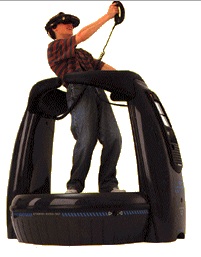
source: arcadianvr.com
Eric Howlett was the man behind original LEEP design that was used in several NASA projects in the 1980s and 1990s. These projects initiated his shift in focus from stereo photography to Virtual Reality, leading to the creation of The LEEP CyberFace in 1988. NASA and a sensory research group at M.I.T. tasked Pop-Optix Labs with designing very wide-angle LEEP format lenses for video cameras.
This work is what first made wide angle telepresence possible. The most notable feature of the system, other than the fact that it was readily available on a commercial basis, is the novel method of mounting the display on the head. The large white “chest counterpoise,” served as a terminus both for the main cable to the HMD, and for the distribution cables up to the left and right eyes, and as a highly damped counterweight to the display itself.
VPL Research was one of the first companies in history that developed and sold virtual reality products. It was founded by VR pioneer Jaron Lanier in 1984. In 199o The Data Glove was released. This device originally started as an input system for computers. It was later used for virtual reality systems. The device was using 6502 microcontrollers.Nintendo supported a similar product later that year called the “Power Glove”. Later the same year, the EyePhone was released. A head-mounted display unit which is used to visually immerse its user into a virtual environment. To further the level of immerse, each LCD screen provided a slightly different image to create the illusion of depth.
Virtuality Group produced a set of two VR systems that included a stand-up full body system and a vehicle cockpit type. Created with the works of Krueger and Sutherland in mind, these devices gave the fullest VR experience imaginable at the time.
The CyberMaxx, VFX-1, and i-glasses all came out within the span of 5 years from the DataGlove’s launch. The primitive equipment was limited in its abilities, but sparked the imagination in its users.The differences between what we could do versus what we experienced were a chasm of crude pixels. This was virtually the near death of VR as an industry. While its offerings were still being used for science, VR was being overshadowed by a technological juggernaut and a revolution: The internet.
Palmer Luckey, Oculus Rift and the Re-Birth of Virtual Reality
Two years ago, Palmer Luckey, put the pieces together using improved technology. He set up a Kickstarter and promised each person willing to part with $300 would have an Oculus Rift, his own version of a VR headset, of their own. Not only would they have a set to use, but also have the power and ability to create their own virtual worlds. For the first time ever one could casually wander around virtual spaces, or do things they wouldn’t do on a normal day to day, like hack up zombies. It wasn’t so much about what you did, really, it was the act of immersion alone that was mind blowing. Mark Zuckerman, the creator of Facebook, purchased Luckey’s Oculus wholesale for $2 billion, signaling a promising future for virtual reality.
- The Sensorama
- Ivan Sutherland
- Sketchpad
- Sketchpad boxes
- Virtual Room Ivan Sutherland
- Head Mounted VR System Ivan Sutherland
- Sword of Damocles
- Videoplace
- Psychic Space
- SuperCockpit
- SuperCockpit
- Cyberface
- Dataglove
- Eyephone
- Eyephone VPL
- Virtuality
- Sega VR
- Cybermaxx
- Cybermaxx
- VFX-1
- Vfx1 Headgear and Linkbox
- i-glasses
- i-glasses
- Oculus Prototype

